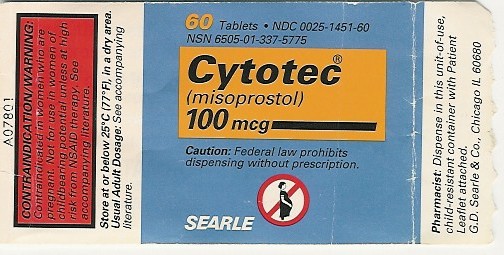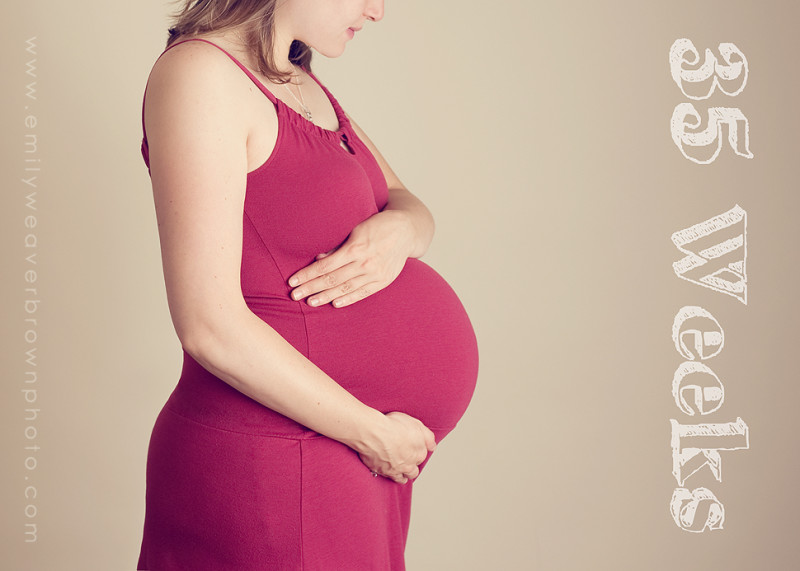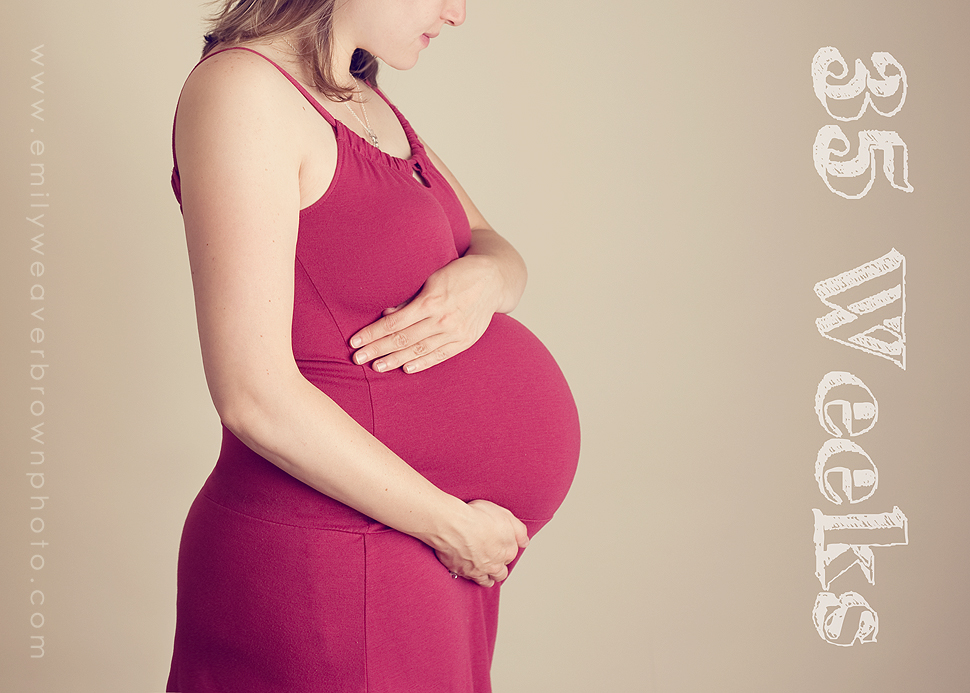In my last post I left off with my reasons for choosing a home birth and I just wanted to expand on those a bit…
– Natural birth is healthiest and safest for both mom and baby
Besides the obvious side effects of epidural anesthesia to the mother (Hypotension, Urinary Retention and Postpartum Bladder Dysfunction) and the baby (Fetal distress; abnormal fetal heart rate, Fetal distress; abnormal fetal heart rate) one of the most significant reasons for not choosing to have one is that in most cases it is also followed by a pitocin drip which carries much more significant risk to the baby. This also begins what is often know as the “cascade of interventions” that is hospital birth. Epidural anesthesia also confines laboring mothers to the bed (because she cannot walk or really maneuver her lower half). On the surface may not seem like a big deal but in reality a baby has to corkscrew its way through a pelvis and laying on your back or simi-reclined is one of the least effective ways to labor and help the baby make that turn. It stands to reason that for epidural births there is a higher incidence of posterior or mal positioned babies, this leads to a higher C-section rate, and a higher use of other interventions like the vacuum extractor and forceps.
– Hospitals don’t support natural birth
Yes, it is possible to have a natural birth in a hospital but almost everyone I know who has done it has had to fight with the hospital nursing staff to make it happen. I think the main issue is that hospital-nursing staff is not trained in how to support women through natural childbirth. (which is surprising since natural birth is healthier for the mother an baby). They are trained instead in active management of labor with drugs. So whereas the nurse sees herself as being helpful by offering pain relief, to the woman who is trying to labor naturally she is just being discouraging and unsupportive (especially if they come into your room every 20 min and offer you drugs). And since something like 85%– 90% of women in hospitals do have epidural anesthesia the nursing staff is not experienced in suggesting alternate pain coping techniques.
In all honesty I think a lot of what is done in our local hospitals labor and delivery wards is down right dangerous.
My main issues with hospital safety are:
– Ridiculously high C-section rate
– Over use of induction of labor and labor stimulating drugs
– Continuous electronic fetal monitoring
The World Health Organization advocates for a C-section rate of between 5 and 15 per cent These are the C-section rates for our local hospitals for 2008 (the last year the data was available). Sadly these are not uncommon for any region in the U.S.
Name Births C-Sections Rate%
========================
Evergreen 4572 1840 40.24%
UW 2200 842 38.27%
Group Health 1720 403 23.43%
Overlake 4119 1552 37.68%
Swedish 7259 2433 33.52%
While C-sections can be life saving for both a mother and baby they are in no way ideal or even preferred to vaginal birth. A c-section is major abdominal surgery and that carries with it it’s own set of risks and potential complications. Personally I prefer not to have a C-section unless it is actually necessary. Just based on the statistics it doesn’t really seem that the local hospitals agree with my view point.
I could not find any hard and fast induction of labor statistics but I have seen it estimated that pitocin is used in 90% of all labors at Evergreen (the hospital just 5min from our home). Pitocin is synthetic oxytocin and is used to induce and or speed up labor but it is also extremely dangerous for the unborn baby who may not be able to withstand the artificially strong and close together contractions.
Another drug that is routinely used in inductions that frankly terrifies me is Cytotec (Misoprostol). Cytotec is actually a ulcer medication that is not approved for use in pregnancy. In fact the American College of Obstetrics and Gynecologist recommends AGAINST it’s use in induction of labor but somehow it ‘s use is still routine in our labor and delivery wards. Here I am including a picture of the warning label printed on the box.
 The warning that comes with the drug clearly states that it “SHOULD NOT BE TAKEN BY PREGNANT WOMEN” “CYTOTEC (MISOPROSTOL) ADMINISTRATION TO WOMEN WHO ARE PREGNANT CAN CAUSE ABORTION, PREMATURE BIRTH, OR BIRTH DEFECTS. UTERINE RUPTURE HAS BEEN REPORTED WHEN CYTOTEC WAS ADMINISTERED IN PREGNANT WOMEN TO INDUCE LABOR OR TO INDUCE ABORTION BEYOND THE EIGHTH WEEK OF PREGNANCY”
The warning that comes with the drug clearly states that it “SHOULD NOT BE TAKEN BY PREGNANT WOMEN” “CYTOTEC (MISOPROSTOL) ADMINISTRATION TO WOMEN WHO ARE PREGNANT CAN CAUSE ABORTION, PREMATURE BIRTH, OR BIRTH DEFECTS. UTERINE RUPTURE HAS BEEN REPORTED WHEN CYTOTEC WAS ADMINISTERED IN PREGNANT WOMEN TO INDUCE LABOR OR TO INDUCE ABORTION BEYOND THE EIGHTH WEEK OF PREGNANCY”
You are probably wondering what my beef is with continuous electronic fetal monitoring. As I mentioned in my 33 week post I wanted to come back to this topic. My main issue is that continuous electronic fetal monitoring severely restricts the movement and ability of the laboring mother to cope with pain using natural methods. (remember the 2 sensors strapped to your belly that keep sliding off) Furthermore researchers at the Federal Centers for Disease Control and Prevention reviewed 16 studies on continuous electronic fetal monitoring (EMF) and found that the “routine use of the procedure had no measurable effect on death or illness of infants or mothers.” And that “electronic monitoring was associated with a higher rate of Cesarean deliveries, which increases surgical risks to mothers.” In reality if EMF were to be introduced today it would never be approved by the FDA for routine use. The only reason that it is in use today is because it was introduced in 1970s and quickly became widespread before the FDA began regulating medical devices. In 1976 Congress gave the FDA the authority to regulate medical devices and the EMF machine was grandfathered in without FDA review. If the EMF machine would have gone through the review process it would never have passed the FDA standards for safety and effectiveness as it does nothing to improve neonatal outcomes. Yet there the machine sets in every labor and delivery room and most women are hooked up to it from the beginning to the end of their labors. An electronic tether. Why you ask, well they have found that little strip of paper the machine continuously prints out quite useful in court litigation.
– Many studies have shown that for low risk women with uncomplicated pregnancies birth with a trained certified midwife at home is just as safe as hospital birth.
My last point is just that the medical literature backs all of this up. Planned home birth for low risk women with a trained professional is just as safe as hospital birth. And in reality since my midwife is not going to pressure me to use drugs I don’t want, give me Cytotec, or use an EFM machine the risk of an adverse outcome is even lower.
Since the beginning of this pregnancy we have been telling people that we are planning a home birth and it’s actually quite shocking how many misconceptions are out there. Having a homebirth does not mean we are going to do it alone. We are have hired a team or trained medical professionals to come to our home, supervise and facilitate the process, and assist should an emergency situation arise. I talked about it before in past posts but in Washington state midwives are trained medical professional licensed by the sate. They are trained in prenatal care and can administer various drugs. If at any time during my labor a complication arises that cannot be dealt with at home we will transfer to the hospital. Statistically speaking most of the midwives hospital transfers are non-emergent and are for minor issues.
So there you have it, that’s my reasoning. If you yourself are pregnant or if you just want to know more a good place to start (as mentioned) is with the documentary The Business of Being Born.
After that you may want to read:
the thinking woman’s guide to a better birth
Pushed: The Painful Truth About Childbirth and Modern Maternity Care
Born in the USA: How a Broken Maternity System Must Be Fixed to Put Women and Children First
Again, any questions and comments are welcome!
My Portfolio | Contact Me | Follow Me @emilyWbrown
Portfolio | Contact Me | Book a Session .
.




We had our first baby at home 5 weeks ago and it was the most wonderful and hardest thing I’ve ever done. “Wow, I did that!” is something I still think all the time!
I started a comment – but it was too long and grew into a blog post…
http://schrockthehouse.wordpress.com/2010/10/01/birth-statistics-in-my-local-area/
Wow! I am sorry to hear that about most hospitals being against natural birth. I guess I am lucky…
With my first, my doctor KNEW that I did not want drugs, but I told her that if something goes haywire, I want her to give in. After 3 hours of being in labor, I asked for a local…which I swore I would NEVER do again. It was horrible! I thought I was going to fall of the table my world was spinning. I requested no pitocin, or anything else. She was fine with that.
With my second, (my original doctor moved) and I asked NOT to receive anything! He was totally fine with that. I went through labor and delivery with nothing. The nurses were so supportive! A few hours later after birth I did ask for some ibuprofen because my legs hurt so bad from pushing (my DD was upside down–not breech–just came out looking up at the world).
Being a veteran of eight natural births, five of those at home, I love what you’re writing here. One of my favorite books about birth is Baby Catcher by Peggy Vincent. In fact, its from that book that I learned what the term “cord prolapse” means…imagine if I had never read it…
Unfortunately due to previous history (stillbirth) I am monitored very closely during birth and am actually happy about it. However, when we had our first after our SB, we were able to do everything naturally at a hospital with our OB and a trained midwife on staff. I guess I just wanted to say that there are hospitals out there who are very pro-natural birth/no drugs, but you just have to ask and be very specific. I will live vicariously though your natural birth though as that won’t be possible for me anymore, and trust that it goes smoothly with no complications. Meanwhile, I will be hooked up to the monitors and be induced at 40 weeks come Jan 15th.
Good on you – I have to agree that intervention in the US is based much more on convenience that on what is right for mom and baby. In New Zealand, you give birth with a midwife and a DR is only called if needed – otherwise it is just you and her and they encourage as natural process as possible. I walked around through my entire labors (both times) and had super quick births – I attribute it to no meds and the abiity to let my body do what it was made to do.
Anyway, I wish you all the best and look forward to hearing the safe arrival of your little one!! Blessings on your family!
Sounds like you’ve done your research – good for you! I agree that the natural birth process is best for both mother and baby. I’m disappointed though that more people do not have a trusting relationship with their OB or midwife to have a drug-free delivery. I too guess I am lucky that I have an OB who both supports and encourages the natural birthing process.
Good for you for doing your research. I guess statistically i’m in the minority, as I had two unmedicated births in a hospital in Kirkland, without interventions, and fantastic midwives and nurses. Both births had one check of monitoring and that was it. Both births were fast, and uncomplicated, so that was in my favor. I also labored as long as possible at home, to avoid the hospital craziness. In hindsight a birth center would have been fantastic, but I am grateful I was in a hospital as my first daughter didn’t breathe upon birth and even after nurses tried to suction and get her going, nothing. NICU docs were called. She needed assistance to breathe, but ended up fine after some care in the NICU. I realize I am more of a rare story than a common one. I wish more women had births like mine, as I found it phenomenal and wonderful. Good Luck and best wishes on a peaceful and joyous birth.
How funny… I was just about to post about my experience and then I read the post above… pretty sure Karin and I delivered at the same hospital, with the same midwife group. I encourage every pregnant women to look into the differences between midwives and OBs, to look into their options for birthing location, and to really understand the effects of drugs, epidurals, and c-sections. I will say that in my situation, I was glad to be at a hospital, as I had an unknown infection at the end of my pregnancy, which caused me a lot of complications after giving birth. My midwives were amazing, and the hospital in general was great. No pressure about anything, allowed to give birth according to my wishes with no arguments, etc. I know lots of people however, who have also had great experiences at home and in a birthing center, and I hope every woman realizes they have options.
I watched that movie, and thought, “I wish I could have done that.” I really did. But the hard and true fact for ME (and this is only me), is that if I HAD attempted a home birth, both I and my son would most definitely not be here today. I often think that if I could ever get pg again, I would love to try a home birth. But probably not. I’m too chicken now. Too many “what ifs”. I sincerely hope it goes well for you, though! I hope you have that beautiful experience that I wish I had had. And I hope your little one is healthy and beautiful, too!